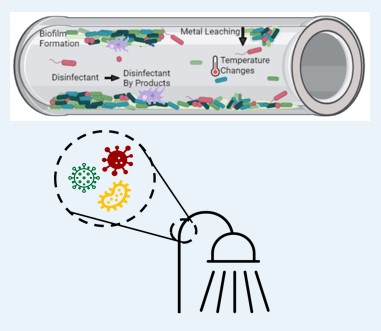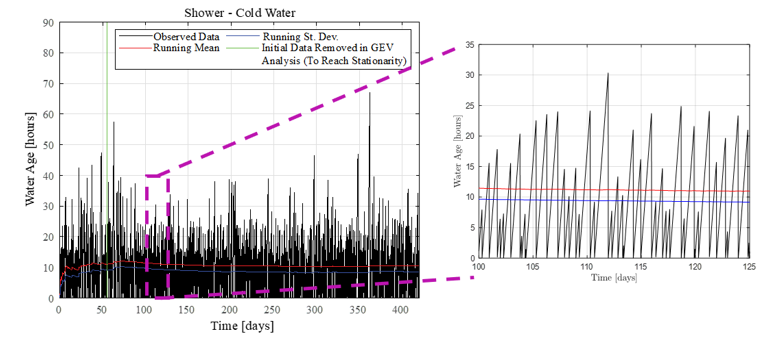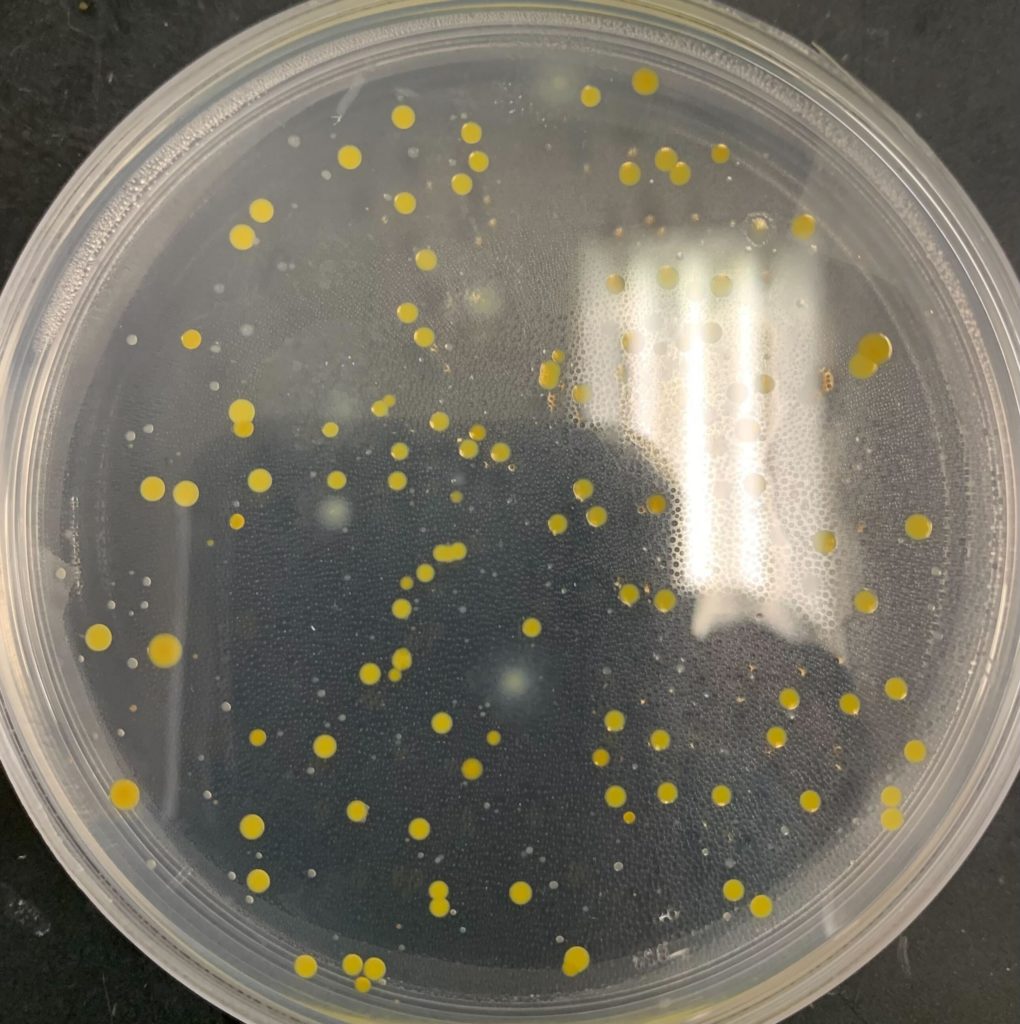Biofilms in Drinking Water Systems

Opportunistic pathogens can proliferate in drinking water systems, particularly when water stagnates in the premise plumbing system. These pathogens can infect immunocompromised people and cause serious illness or death. Strategies can be implemented to reduce the risk of infection.

We are using stochastic water demand generators, hydraulic & water quality models, and statistical analyses to explore the effect of variable water demands at fixtures on biofilms and opportunistic pathogens in premise plumbing systems. In particular, we are exploring how the use of low-flow fixtures and changes in building occupancy can affect water age and water quality.

We are studying how purging devices, where small volumes of water are flushed periodically from the system, can be used to maintain water quality in premise plumbing systems. By implementing purging devices, average water ages are reduced and the likelihood of high ages is drastically reduced.

Bacteria in drinking water can grow in biofilms and in suspension but the biofilm-associated bacteria are more likely to be opportunistic pathogens. Typically, only total bacteria are counted so we are developing a model to explore the relative abundance of biofilm and suspended bacteria under different conditions.

We are currently studying the effects of water stagnation in homes with and without chlorine to understand the impacts it has on the microbial community. We are also looking to characterize these communities and see how the two communities differ from one another and in turn, understand how opportunistic pathogens play a role in these communities with differing stagnation periods.